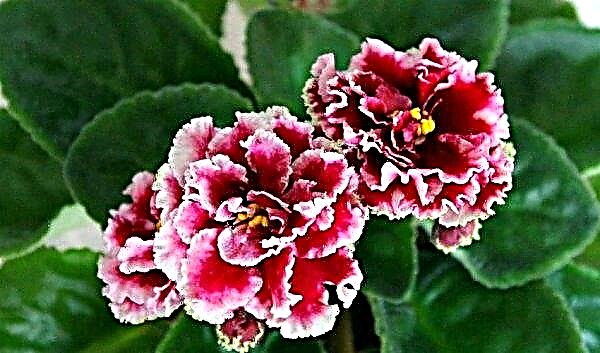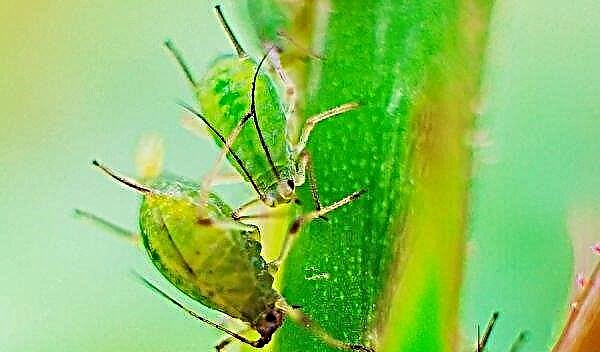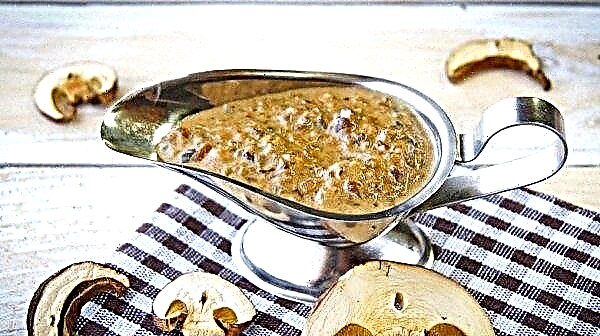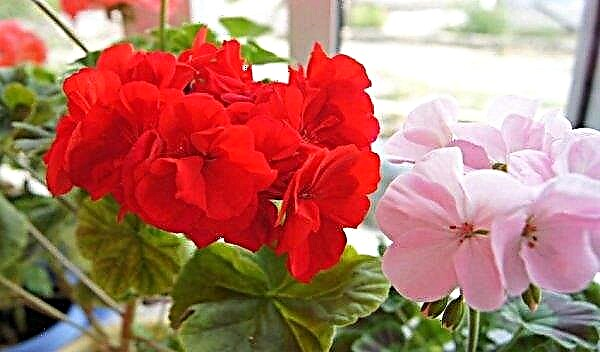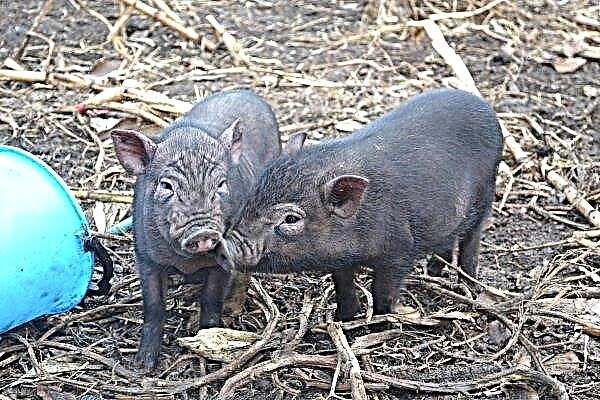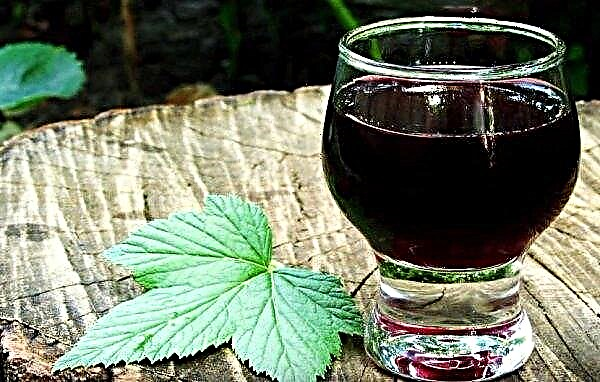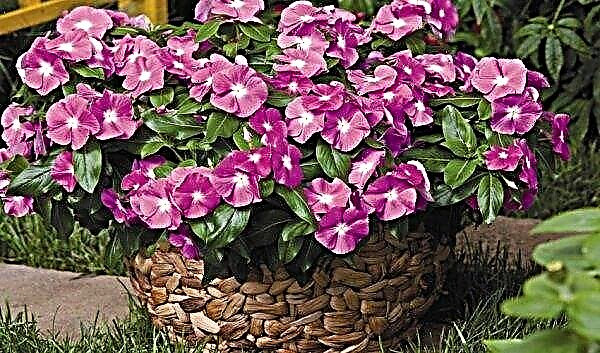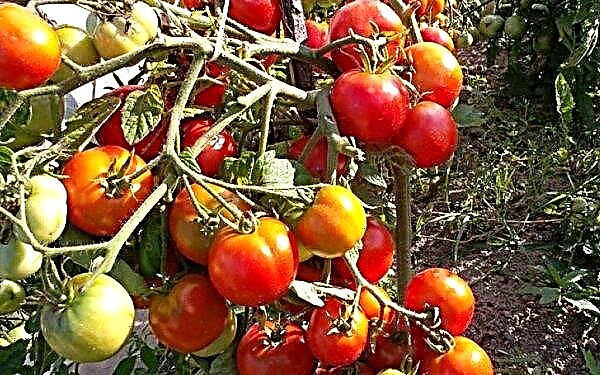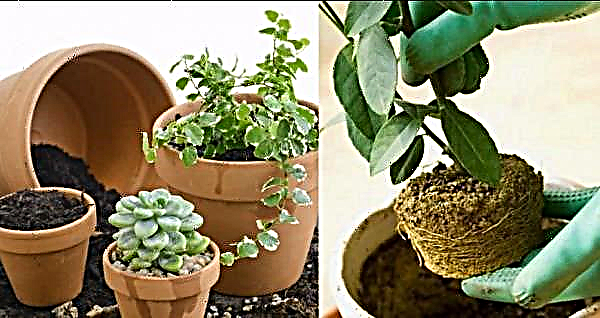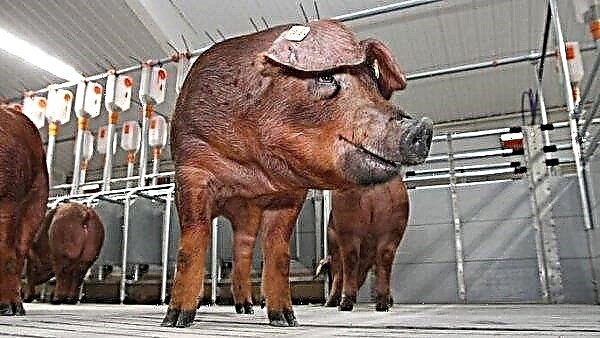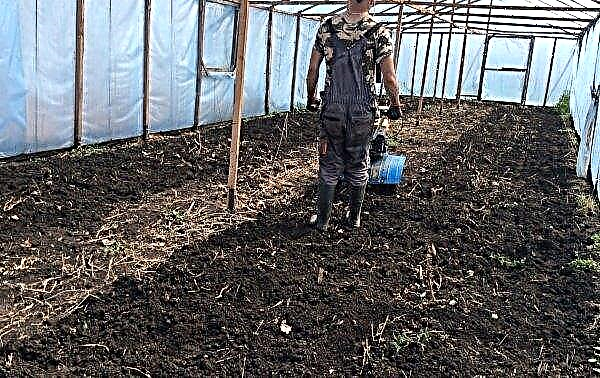Despite belonging to evergreen conifers, the pine tree may turn yellow, or rather, its needles. This can be caused by a number of reasons (non-compliance with the rules of agricultural technology, attack of pests and diseases), but in any case it is dangerous for the life of the plant. In addition, the decorative qualities of wood will decrease. Why needles turn yellow in the pine, and what to do with this phenomenon, read on.
Wrong landing
Compliance with the rules of pine cultivation is the main task of the gardener. Agrotechnical procedures begin with the correct planting of a seedling. It must be placed in the soil so that the root neck is above the ground. In no case can you deepen it into the ground, since this is fraught with the onset of decay, which will lead to yellowing and shedding of the conifer.
Did you know? Scientists have investigated that the life span of pine needles is 5 years. Then they turn yellow and fall off. The time for such a phenomenon is the end of summer - autumn. The process begins with the lower branches, and the tips of the shoots and the top of the plant retain a green and healthy appearance.
The main rule of planting is to place the seedling so that the root neck is 5–6 cm above the topsoil.

Improper care
By its nature, pine is a mountain species of trees. Despite this origin, everyone who planted this coniferous plant in their area should remember to take good care of it. Especially when it comes to decorative breeding varieties of culture.
Pine cultivation has features: you need to choose and prepare the site correctly, taking into account the cleanliness of the air in the environment, the standard of illumination. The tree needs watering and fertilizer. Read more about caring for conifers next.
Video: Why pine needles turn yellow and how to deal with it
Wrong watering
If you are looking for the answer to why pine needles turn yellow, analyze whether you are observing the norms of watering the plant. Needle necrotization can be triggered by both a shortage and an excess of moisture. Correct and adjust watering of coniferous crops.
Important! You can not plant pine in marshy and excessively moist areas: the tree is afraid of stagnation of water.
Young plants, under 5 years old, must be watered weekly, using 10 l of water for one tree. Pines that have already reached the age of five can be watered 3 times per season, pouring out under each 40-50 liters of water. If spring, summer or autumn is arid, then adult trees should be watered according to the same scheme as young trees.
 In rainy times, with frequent rainfall, the number of irrigations is reduced: you need to moisten the earth only when its top layer dries 5–7 cm deep
In rainy times, with frequent rainfall, the number of irrigations is reduced: you need to moisten the earth only when its top layer dries 5–7 cm deep
Lighting problems
Proper lighting on the site is the key to the health and decorativeness of pine. The needles may turn yellow if the tree grows in the open sun, which literally burns its needles. Lack of light is also fraught with a detrimental effect on pine needles: they lose their green color and crumble, and the tree becomes oppressed, its growth slows down. Choose for landing a site that is located in partial shade.
Wrong fertilizer
The pine tree will “communicate” the lack of fertilizer with its appearance: the needles begin to turn yellow and soon crumble. The signal that the pine tree needs nitrogen will be the chlorotic color of the needles, slowed down growth and development of the culture. To fix the problem, fertilizing with nitrogen-containing agents (nitroammofosk or azofosk) will help. The optimal proportions are 30–40 g per 10 liters of water. Fertilizer time is the beginning of spring.
The lack of iron is accompanied by the loss of needles of a natural color and the acquisition of whitish shades. If such signs are found, fertilize the culture with solutions of special preparations: “Quadrice”, “Heteroauxin”, “Epina”. Type of top dressing - foliar. Dosage - according to the instructions. Frequency - 3 times per season.

Air pollution
The fact that the cause of necrotization of the needles is polluted and gas polluted air is evidenced by the nature of the changes: the conifer begins to lose its natural green color from the top, and the entire crown will gradually turn yellow.
Before planting pine trees, be sure to study their features and preferences. If the characteristics say that the variety is afraid of polluted air, and you do not live in an ecologically clean region, abandon this variety and choose a more resistant. On your own site you need to plant only those pine trees that are unpretentious to the state of air.
Pests
In addition to violating the rules of agricultural technology, the cause of the loss of pine needles of green color can be pests. Ephedra can suffer from spider mites, aphids, bark beetles, hermes, pine red gall midges, mealybugs, scale insects. Only a timely struggle with such "uninvited guests" will help save the tree, and with it the landscape design.
Spider mite
Pine crown needles can attack spider mites - small insects of white or reddish color, which are braided with needles by a dense web. The pest gives the tree a lot of trouble. The danger lies in the fact that insects feed on juice, which is sucked from the needles and shoots of the plant. The consequences are deplorable: the needles first turn yellow and begin to crumble, the shoots are deformed and twisted, the tree becomes oppressed and can even die.
 In order to prevent the appearance of an insect, it is necessary to promptly remove fallen leaves and vegetation residues from the site, since larvae winter in them, observe watering standards
In order to prevent the appearance of an insect, it is necessary to promptly remove fallen leaves and vegetation residues from the site, since larvae winter in them, observe watering standards
Special chemicals have been developed to combat ticks. - Acaricides with which plants are sprayed. Pine can be effectively treated with solutions of "Demitan", "Sunmight", "Chloromait", "Envidora", "Apollo", "Nissorana", "Bitoxibacillin", "Kleschevita", "Fitoverma", "Aktofita" (optional).
Did you know? Meteusa pine is the oldest tree in the world. Her age is 4842 years.
Aphid
Aphids are another pest that loves to feast on pine juices. Small brown insects, with or without wings, organize entire colonies on the tree. In the spring they feed on needles, in the summer they move to shoots, under the bark of which the females make egg-laying. New colonies hatch from laid eggs in late April - early May. Such a process without human intervention can lead to the death of the tree.
 To combat aphids, it is advisable to spray the plant with a solution of "Mospilan", "Confidor Maxi" or "Calypso"
To combat aphids, it is advisable to spray the plant with a solution of "Mospilan", "Confidor Maxi" or "Calypso"
Bark beetles
Bark beetles are small black bugs that inhabit under the bark of a plant. The tree reports the appearance of the pest by a strong release of resin. Then, on the trunks of pine trees you can see drilling flour, that is, a lot of microscopic fine sawdust that are released when the beetle is introduced into the trunk of the plant. The needles begin to turn yellow and fall, young shoots break.
 Treatment with insecticides will help to eliminate the pest: “Clipper”, “Antiferomon”, “Arborget”, “Bi-58”
Treatment with insecticides will help to eliminate the pest: “Clipper”, “Antiferomon”, “Arborget”, “Bi-58”
Hermes
Hermes - small red-brown aphids, the body of which is covered with waxy hairs. Both adult insects and their larvae feed on juices from needles and shoots, which leads to the depletion of the plant and the process of necrotization of needles. In the fight against the pest effective drugs "Confidor", "Mospillan".

Gallica red pine
Pine red gall midge is a small two-winged pest, the brown body of which reaches 3 mm in length. The insect breeds too quickly: in one clutch, the female is able to lay about 120 eggs from which orange larvae hatch.
Did you know? Esotericists claim that each tree has a special energy. Thus, the energy charge of a pine can be compared with a person who is distinguished by strength of mind, wisdom, integrity and a craving for eternal knowledge.
Eating needles and its juices, the pest provokes the growth of needles at the base and the slowdown of their growth. Then, swelling appears on the damaged needles, they turn yellow and begin to fall.
 Wood pine red gall midge will be eliminated by treating wood with the Engio, Aktara, and Calypso solutions.
Wood pine red gall midge will be eliminated by treating wood with the Engio, Aktara, and Calypso solutions.
Mealybug
A harmful insect that settles on the rhizome of the culture, and gradually moves to its aboveground part. It is easy to recognize the pest because it has characteristic features: an oval body up to 1 cm long (covered with white powdery wax), a large number of small legs, and a long whisker. Female insect winged.
Did you know? Male mealybugs cannot harm the plant because they do not have a mouthpart.
The danger of the mealybug is that it can cause the death of the plant: the pest eats juice from the cells of the tree, which leads to a slowdown in its growth and development. Pine needles damaged by such an insect begin to curl and turn yellow.
 Spraying with solutions of Aktar, Admiral, Aktellik, Biotlin, Komandor, Confidant, Tanrek, Mospilan and other insecticides will help save the culture
Spraying with solutions of Aktar, Admiral, Aktellik, Biotlin, Komandor, Confidant, Tanrek, Mospilan and other insecticides will help save the culture
Shield
This pest has an oval body covered with wax shields.. Length - up to 1 cm. Adult females are motionless: they shelter eggs that are laid on the surface of a tree. Males, in contrast, move fast. The hatched larvae are first tightly attached to the pine needles, and only with time they begin to move little by little.
Due to the fact that the pest is covered with shields, it is difficult to get rid of it. Only contact-intestinal chemicals will help eliminate scabs.: Intavir, Actellik, Bankol, Actar, Mospilan.
 The danger of such an insect, like most others, is that it sucks juices from the plant. The culture becomes oppressed, the needles begin to lose color and die
The danger of such an insect, like most others, is that it sucks juices from the plant. The culture becomes oppressed, the needles begin to lose color and die
Disease
Diseases of coniferous plants, which affect both mountain and decorative varieties of culture, can also become the cause of necrotization of pine needles. Among the most common are rust and brown shute.
Rust
A fungal disease, the favorable environment for the development of which is hot weather and thickening of crop plantings.
Important! A tree suffering from fungal diseases cannot be watered. The procedure for spraying with insecticides should be carried out in cloudy weather so as not to burn the plant.
The symptomatology of the disease is the appearance of bulges and growths on the trunks and skeletal branches, which have a characteristic orange or red color. The development of the disease leads to the loss of needles of color, then the plant sheds both needles and young shoots.
 Treatment is carried out by sanitary pruning of diseased parts of the plant and treatment with "Ridomil", "Gold", "Tilt" or "Skor"
Treatment is carried out by sanitary pruning of diseased parts of the plant and treatment with "Ridomil", "Gold", "Tilt" or "Skor"
Brown shute
If the tips of the pine needles are covered with yellowness, this may signal that the tree got a brown shute with a fungal disease. Yellowing spreads quickly throughout the needles, then the needles acquire a reddish color, and coniferous leaf fall begins. The peak of the development of the disease is the beginning of summer. At the end of summer, a progressive disease signals itself with black dots on young shoots and needles, which are spores of the fungus.
Did you know? If your children are capricious, then a bouquet of pine branches should be placed in the room. The smell of this coniferous tree has a calming effect.
Such a disease is fraught with rapid death of pine. At the first signs of its appearance, it is worth taking radical measures: cut off all diseased areas of the plant, treat the culture with copper sulfate solution, Bordeaux liquid or the Ridomil Gold chemical.
 To prevent the occurrence of the disease, adjust the watering, since the fungus appears due to lack or excess moisture, and also make sure that the tree receives enough sunlight, which is necessary for photosynthesis
To prevent the occurrence of the disease, adjust the watering, since the fungus appears due to lack or excess moisture, and also make sure that the tree receives enough sunlight, which is necessary for photosynthesis
Everyone who believes that a pine tree is a tree that is enough to plant and forget about it is deeply mistaken. Culture does not grow on its own. She needs to provide good care, protect from pests and diseases. The slightest changes in the appearance of the pine should alert the gardener, as they can be a sign of serious problems. First of all, the tree signals that something is wrong with its activity, the color of its needles. If her yellowing is not seasonal, then it is worth looking for the cause and eliminating it.

